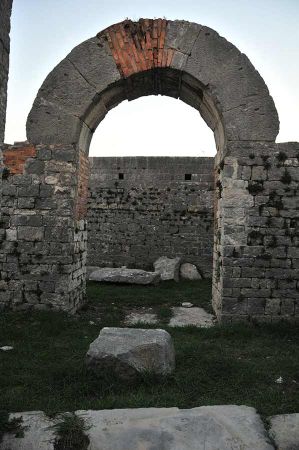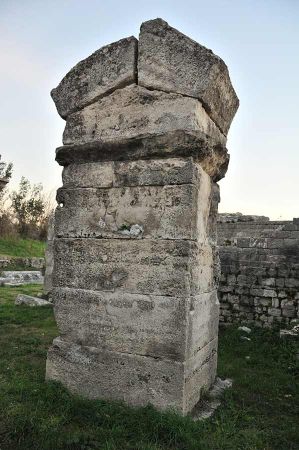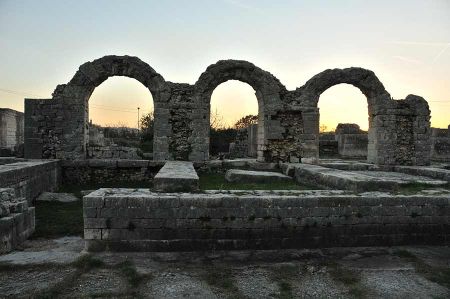Salona - next destination of our tour along Roman road system
- Written by Portal Editor
For several years now, Split has been a popular summer tourism destination in Croatia again, but our travel points with Salona, Klis Castle and Deocletian's Palace in Split were significantly removed from it, and not just seasonally.
Who goes to Split at the end of November? Well, we're just looking for the traces of the Romans and for what the local authorities and organizations are now using for tourism or, to show the opposite in many places, what has so far been unused and could be used for tourism to "make a living" for the local population and at the same time preserve and protect cultural assets.
Robert is also a state-trained tour guide

But first we had to manage the journey from Staranzano to Split. So we initially went on side roads to Trieste. We had researched on the Internet that there should be a scenic route from Trieste via Basovizza and Kozina to Rupa, which leads via Slovenia to the motorway connection to Rijeka. Since neither motorway nor expressway is used on this short section, it was supposedly toll-free. There were some Italian customs officers on duty directly at the border crossing from Italy to Slovenia, whom we asked again as a precaution about the vignette-free crossing of Slovenian territory: that's right, no vignette requirement on the E61!
On the site of an olive oil production facility

In the evening there were brief explanations about the urban development of Solin and the surrounding area, because early the next morning we were supposed to go on our first sightseeing tour to Klis Castle.
Salona became Solin
Julius Caesar conquered Salona in the mid-1st century BC. B.C. to the rank of a Roman colony (Colonia Martia Iulia Salona) and made it the administrative centre of the entire province of Illyria (later Dalmatia). The Roman Emperor Diocletian, who himself probably came from the area around Salona, gave the city the emperor's family name: "Valeria" as an honorary title. The last legitimate Western Roman Emperor Julius Nepos resided here from 475 to 480. But more about Roman times later.
Between the 4th and 6th centuries, Salona was an important centre of early Christianity in Europe, as evidenced by many archaeological sites and contacts with Aquileia. In addition to the already official Roman religion, many different religious communities lived side by side in ancient Salona, mostly peacefully: followers of various oriental religions who worshiped Isis and Cybele, the Jewish religious community, but also the followers of the sun god Mithras, whose places of worship were found in several places in Salona became.
To reorganize the church in Salona
In 313, Emperor Constantine granted all Christians the right to freely practice their religion with the Agreement of Milan. One of his successors, Theodosius I, made Christianity the state religion at the end of the 4th century and passed laws against paganism and Christian heresies. These changes affected the development of the city. The centre of Salona was moved to the east, where an episcopal centre emerged in the 5th century, with a double basilica, a baptismal church and a bishop's palace. At the beginning of the 5th century, the Salonite bishop became metropolitan of Dalmatia. Two important ecclesiastical meetings of all Dalmatian bishops were held in Salona in the years 530 and 533. After the division of the empire in 395, the province of Dalmatia passed to the Western Roman Empire, and after its final collapse in 476, Dalmatia belonged to the kingdom of Odoakar.
At the peak of development, the city is said to have had around 60,000 inhabitants. At the end of the 5th century, Salona became part of the Ostrogothic Empire under Theodoric. In 535, the Eastern Roman general Mundus conquered the city for Emperor Justinian.
After that, Salona lost its importance
So much for the first historical details and background, which should continuously expand into an overall picture over the next few days, which should also include getting to know interesting people from the region.
Please read as well:
Aramaic Christians in Türkiye are receiving their own schooling
Early romantic park at the moated castle of Lütetsburg
-
-
-
-
-
-
-
-
-
-
-
-
-
-
-
https://www.alaturka.info/en/croatia/split/6298-salona-next-destination-of-our-tour-along-roman-road-system/amp#sigProIdb3a3c27ab1
